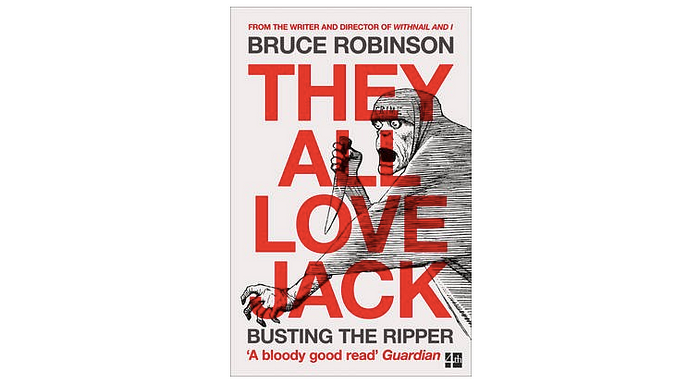Bruce Robinson — They All Love Jack: Busting the Ripper

We all know someone like this:
“There’s a perverse, almost heroic status that has evolved around this prick, as though he were someone special, rather than the epitome of all that is cruel, and a God-damned repugnance.”
Well, there aren’t enough books which set out their stall like that. I even had to have a quick look at the title page again to reassure myself that Bruce Robinson wasn’t talking about me. But who is he talking about?
First, though, a different question. Which of these are fictional characters — Sherlock Holmes, Scrooge, Doctor Jekyll and Mister Hyde, and Jack the Ripper?
Congratulations if you got the right answer, which is “all of them”. Yes, there was a real-life killer who butchered several women in Victorian London, and who was popularly known as the elusive Jack the Ripper. However, Robinson’s hefty but highly entertaining book argues that the Ripper ‘mystery’ has always been a convenient fabrication. Freemasons in the police and judiciary, recognising the handiwork of a fellow Stonecutter, demonstrably colluded in covering up a scandal that would have toppled the government, while the nascent Ripper industry (still trading today) profited more from an open-ended myth than an open-and-shut case. Jack the Ripper, a conveniently un-catchable bogeyman and the ‘prick’ of the extract above, suited everyone — except the poor victims.
Robinson is outraged by the rotten core of Victorian values, and lets everyone have it with both barrels. As you’d expect from the writer of Withnail and I, his prose style is witty and scabrous, with plenty of ‘fuck’ this and ‘shit’ that and ‘bastard’ the other. You just don’t get that sort of top quality history writing from your Eric Hobsbawms and your BBC Fours.
Also, as with his Withnail and Uncle Monty, Robinson has a feel for Dickensian grotesques of the sort who always seem to populate 19th century English public life. Robinson’s point is that the duplicit and self-serving moralising of Victorian London created a caste of warped upper-class minds, the putative ‘Ripper’ being the most warped of all.
So then, who was the killer? Robinson points the finger at a celebrated music-hall figure of the day, a prominent Freemason and society big-wig who would have known all the ritualistic details that marked the Ripper killings (which were suppressed by the police at subsequent enquiries despite having already been reported on in the press). This figure also wrote taunting letters, replete with more Masonology, that he posted from various locations across Britain, corresponding to the itinerary of a typical music-hall provincial tour.
To cap it all off, the killer then became involved in two separate and equally sensational murder trials, in which even the press and public of the time could smell in both cases an obvious state-sanctioned fit-up.
Robinson makes a compelling case in an equally-compelling book — it might be the most entertaining thing I’ve read so far this year. And if anything will dissuade me from a life of serial killing, it’ll be the fear of someone writing a savage and relentless kicking like this one day about me.
Like this? Read more: https://medium.com/@aidancurran17
